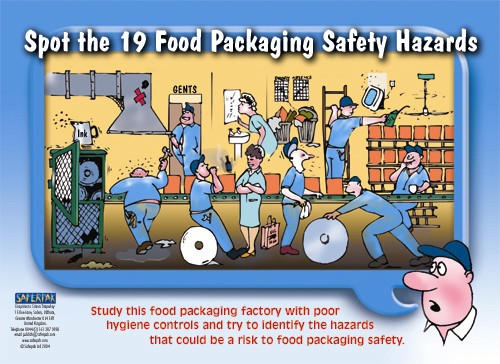
When we talk about food safety, we often end up worrying for additives, preservatives, manufacturing process, clean rooms etc but an important parameter that is often being ignored is PACKAGING. Now more than ever, as food distribution networks globalize, packaging plays a vital role in ensuring the final product is safe and secure for consumption.
Many packaging suppliers / end users are aware of impact of faulty packaging in their respective business. It is known that a malfunction in packaging and its supply chain will have a direct effect on product’s quality and its safety for consumers. They often take necessary steps to manufacture a product safe packaging system. However to have an effective understanding on this safe system one must first understand why such errors in packaging occurs and then take necessary steps to prevent their occurrence.
To build a defence against packaging failures few important factors need to be considered. Foremost review the packaging and manufacturing process followed by addressing the human error factor and finally review the supply chain.
The Packaging Process - Contamination and risks in packaging manufacturing are often overlooked since the emphasis on food safety is considered to be during food preparation itself. However food is an hazard to the consumer even if prepared with all safety precautions but ended up being packed in a contaminated packaging. The only way to prevent such cases is to review and prepare manufacturing processes that adhere to all safety and quality standards. It is often seen manufacturing units for pharma sector have clean rooms, quality certifications and all processes in place. But when it comes to food and other products, this may not be the case always.
Hygiene of the environment where a packaging has been prepared or where the food is being packed should be adhering to the quality standards. This place has a direct impact on the food to be packed. Similarly labelling, sealing, handling and storing processes should be in coherence to quality standards. E.g. It is often seen food causes allergy to consumer if certain ingredient’s information is missing from a label. It is therefore mandatory in few countries to highlight such ingredients on packs, like “this product contains gluten”
Similarly packaging materials quality, source and handling also plays an important role. The inks should not contain poisonous chemicals as they migrate through packaging into food. This could be an issue for high fat rich products. Like ways, process like lamination should be effective to prevent migration of solvents/chemicals into food. Rigid packaging like bottles & trays to be made of virgin materials, glass bottles should be manufactured with precision to avoid mould deformities, sharp threads inside the bottles or blisters that may be hazardous while filling process.
Packaging standards are already being taken seriously by most of the players. Some of the big packaging suppliers have HACCP models, six sigma and ISO standards in place. However the same needs to be implemented with medium and small scale suppliers as well.
Human error - This is an area which always has scope for improvement for every sector and industry. First and foremost industries should ensure that anyone interacting with food or packaging is well equipped with knowledge and importance of personal hygiene and sanitizing. This also implies for machines, equipments, utensils, clothing and work places. The best and only way to achieve this is timely training programmes for each and every employee / worker of the company taking into account respective responsibilities and risks in context to food preparations and packaging. Regular microbial testing; vaccination protocols; health policies; changing rooms; effective use of gloves, head gears, shoes and sanitizers; vigilance cells, regular medical check up and corrective action are few examples that can minimize contamination through human errors
Supply chain - This part of value chain is seldom neglected but it has an equal chance of contaminating a packaging or a product if not handled correctly. Big FMCG companies like Coca-Cola are now mandating that even their packaging suppliers should be GFSI (Global Food Safety Initiatives) certified. These programs are designed to build a defence throughout the supply chain of food manufacturing process.
Need of the hour - Matter of fact is there is no standard list of outbreaks or errors. These can happen for an incalculable number of reasons during any point in the food manufacturing, packaging and supply chain processes. These can only be minimized through effective preparation, strong systems, food safety standards and self motivation.




